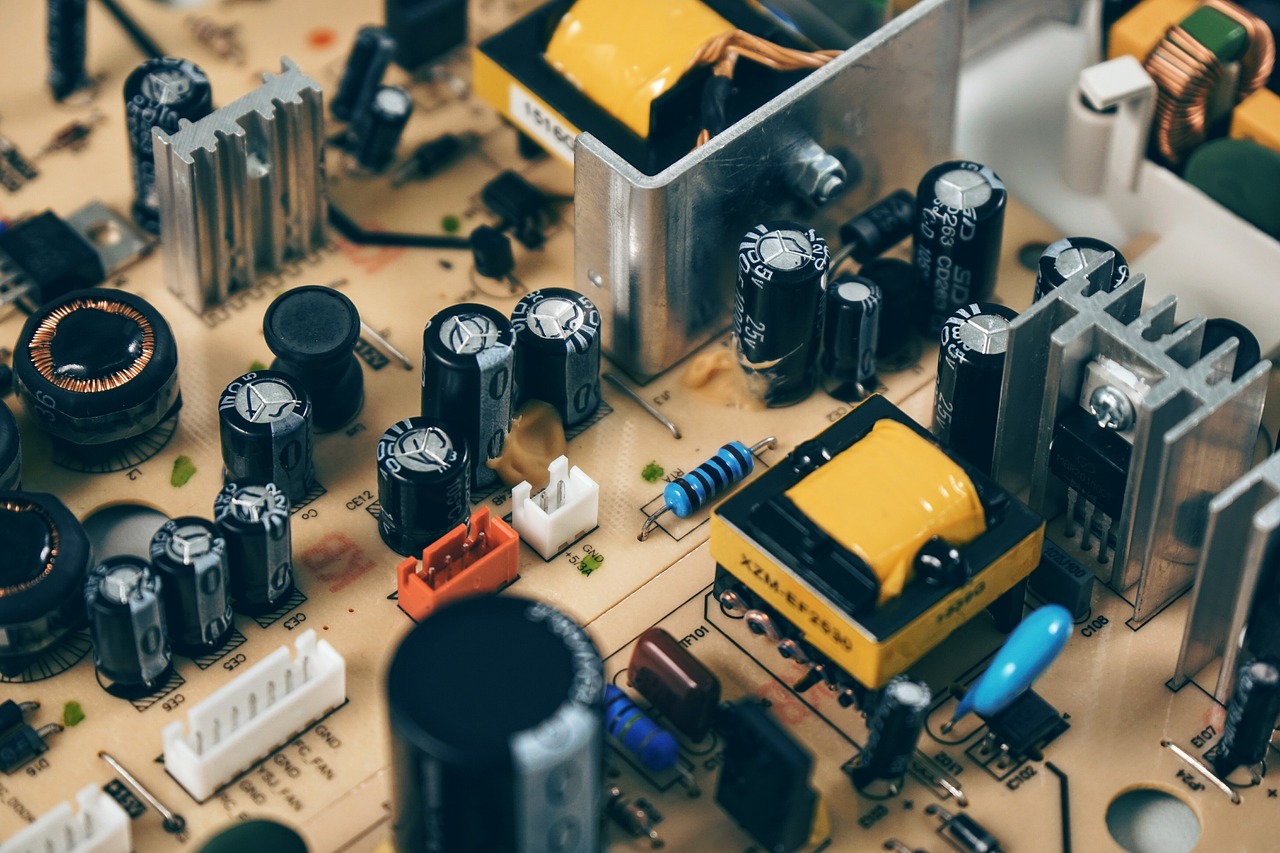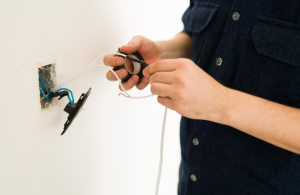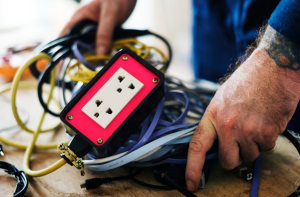acf domain was triggered too early. This is usually an indicator for some code in the plugin or theme running too early. Translations should be loaded at the init action or later. Please see Debugging in WordPress for more information. (This message was added in version 6.7.0.) in /www/wwwroot/leadcont.com/blog/wp-includes/functions.php on line 612117950 NW 53rd Street Suite 337
Miami, Florida 33166

Electrical systems are at the heart of modern homes and businesses, powering everything from lights to large appliances. But you may need to take action when a circuit breaker trips or malfunctions. Whether upgrading your electrical panel, replacing a faulty breaker, or tackling a DIY electrical project, knowing how to remove a circuit breaker from a panel box is an essential skill for any homeowner or property manager.
However, electrical work is not without its risks. Electrical accidents result in billions of dollars of damage each year in the U.S., making it vital to understand both the process and the safety precautions when handling electrical systems.
The electrical industry in the U.S. is experiencing significant growth, with an 8% increase in demand for electricians projected by the U.S. Bureau of Labor Statistics (BLS) over the next decade. As new technologies and electrical systems are introduced, more homeowners are becoming interested in understanding basic electrical tasks, like how to safely remove a circuit breaker from a panel box.
In this blog post, we will guide you through the necessary steps to safely remove and replace a circuit breaker. Additionally, we’ll discuss the growing importance of electrical safety in the U.S. and why it’s essential to trust professionals like LeadCont for any electrical work.
Before diving into the specifics of how to remove a circuit breaker, it’s important to understand why the electrical panel is so crucial. The electrical panel, also called the breaker box, is the central hub that connects your home to the electrical grid. It distributes electricity throughout your home and contains circuit breakers that prevent overloading, protecting both your appliances and the wiring inside your home.
Electrical panels can last for decades, but circuit breakers wear out over time. They may need to be upgraded to handle modern energy demands. Homes built 20 or 30 years ago might not be equipped to handle the same load as new homes. With all the high-powered devices and appliances we use today.
In the U.S., electrical systems are being modernized, with billions of dollars invested annually into upgrading infrastructure and improving grid reliability. According to the U.S. Energy Information Administration (EIA), significant investments are being made into both grid technology and renewable energy sources to ensure that electrical systems are reliable, energy-efficient, and safe.
As a result, homeowners need to have a basic understanding of how electrical panels work and how to perform simple tasks, such as removing a circuit breaker from a panel box, to maintain safety and ensure their system is up to date.

Removing a circuit breaker from your electrical panel can be a straightforward process if you take the proper precautions. Here’s a step-by-step guide to help you safely remove and replace a breaker.
Before you start, gather the following materials:
The first and most crucial step is to turn off the main power to your electrical panel. Locate the main switch at the top or bottom of the panel and flip it to the “OFF” position. This will cut power to the entire electrical panel, ensuring that no live electricity is flowing through the circuits.
Tip: Even after turning off the main power, use a voltage tester to double-check that no current is running through the panel.
Next, remove the cover from your electrical panel. Most panels are secured with screws. Use a screwdriver to remove these screws, then carefully pull the cover off the panel.
Important: Be careful not to damage any wires or connections when removing the cover. If there’s any resistance, check for trapped wires that might need to be moved first.
Once the breaker is disengaged, it will be connected to the panel with one or more wires. Use a screwdriver
to unscrew the terminal screws that hold the wires in place. Unpack the wires gently one by one to avoid insulation damage. It is good to take a photo of the wiring connections first. So you can use it when you install the new breaker.
Now that you already have the interior of the panel opened. You can find the circuit breaker that you need to take out. Every circuit breaker is situated in rows, and each one corresponds to a specific part of your electrical system. One breaker may, for instance, control the lights in your living room, while another may supply the kitchen appliances.
Note the breaker’s position and the circuit it has been connected to. When you put in a new breaker, if you are replacing an old one, make sure the new breaker is compatible with the panel.
With great care, you have to pull the circuit breaker from the metal rail that holds it in place quietly. Possibly you will have to use insulated pliers or a screwdriver to gently get it off in the event of a tight attachment to the rail. Exercise a thorough amount of attention at this time because the breaker is still likely to be attached to live wires. In case of doubt, use a voltage tester to make sure that the circuit breaker is not powered by any electric current.
Once you disconnect the breaker, the next step is to connect it to the panel board by using one or more wires. Use a screwdriver
to separate the terminal screws that attach the wires. Be cautious in removing the wires one by one and protecting the wire insulation. A great tip would be to take a picture of the wiring connections first so that it will be easier for you to check the right connection after you install a new breaker.
Once all the wires are disconnected, you can fully remove the breaker from the panel box. Set it aside, either for replacement or disposal. If you’re replacing the breaker, ensure you have the correct model and size for your electrical panel.
If you’re installing a new breaker, follow the steps in reverse order:
Finally, replace the panel cover and screw it back into place.

Although removing and replacing a circuit breaker may appear to be a manageable task, electrical work is inherently hazardous. The National Fire Protection Association (NFPA) data shows that electrical fires result in more than $1.3 billion of property loss every year. Even the slightest mistake can cause you to be electrically shocked, start a fire, or cause some damage to your home, which can often be quite costly.
However, if your home is old if you are not certain of the process, or if the panel or breaker appears outdated. The safest option is to talk to a licensed electrician first. An expert will check that everything is wired correctly. Ensure the breaker is properly installed, and verify that your electrical system meets the code.
The U.S. electrical business is developing rapidly. With the replacement of more and more electrical panels by homeowners to be able to self-supply the growing demand. The demand for competent experts is higher than ever. According to the U.S. Bureau of Labor Statistics, the demand for electricians is expected to increase by 8% between 2020 and 2030 due to the fast pace of work across all fields. Labor Statistics Office.
Smart homes and renewable energy are the installations that the electrical systems become more advanced to. In the same way that the infrastructure develops, so does the knowledge and proficiency needed to maintain and repair it. That’s why owners should stay informed or hire skilled professionals to handle electrical issues safely. Trust LeadCont for Your Electrical Needs
Understanding how to remove a circuit breaker from a panel box is a useful skill, but safety should always come first. If you’re not experienced with electrical work, hire a professional to ensure the job is done safely and correctly. At LeadCont, we specialize in reliable and efficient electrical services for homes and businesses, from circuit breaker replacements to complete panel upgrades.
Our team of certified electricians is here to provide expert guidance and top-notch service, so you can rest easy knowing your electrical system is in safe hands.
Get a Free Quote Today!
Ever find yourself staring at your computer screen a good consulting slogan to come to mind? Oftentimes.
